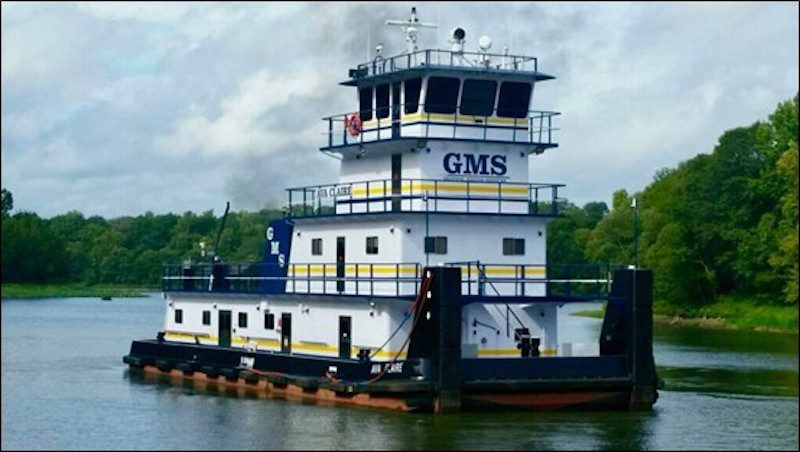Salvage Progresses After Container Collapse in Long Beach
Salvage and recovery operations continue on the cargo ship Mississippi at the Port of Long Beach, with all unaffected containers from the incident secured as of Sunday, September 14. The...

A captain assuming a watch immediately after waking led to a tow striking a lock gate in the Gulf Intracoastal Waterway, the National Transportation Safety Board said Tuesday.
On March 22, 2021, the towing vessel Ava Claire was transiting westbound pushing two fully loaded tank barges in the Gulf Intracoastal Waterway near Intracoastal City, Louisiana. After entering the Leland Bowman Lock, the bow of the lead barge struck a closed lock gate, damaging and disabling the gate.
No injuries or pollution were reported, but the lock gate sustained $2.5 million in damage.
Details of incident along with the NTSB’s determination of probable cause were published in Marine Investigation Report 22/09 released Tuesday.
On the morning of the incident, the captain awoke after 4.5 hours of sleep to assume the watch early from the vessel’s pilot. The pilot offered to take the tow through the Leland Bowman Lock, but the captain declined and took the helm about five minutes before maneuvering the tow into the lock. According to a policy contained in the vessel’s operations manual, a change of watch was not to occur during “a critical move,” such as maneuvering into a lock.
The tow struck the lock gate less than 30 minutes after the captain woke up, according to the NTSB.
The NTSB said the captain at the time of the incident was likely experiencing the effects of sleep inertia—the temporary feeling of grogginess felt immediately upon waking up. According to the report, as the master of the Ava Claire, the captain should have been familiar with the vessel operating policies and procedures and should not have taken the watch. However, his decision to take the watch may have also been the result of impairment caused by sleep inertia.

Additional factors added to the captain’s challenges as he attempted to maneuver the Ava Claire tow, including a tidal current pushing the tow from astern; loss of the GPS feed to the vessel’s electronic chart system which denied the captain his primary source of speed indication; and problems with radio communications between the deckhand and the captain further impacting his ability to judge speed and distance.
The NTSB determined the probable cause of the contact of the Ava Claire tow with the Leland Bowman Lock gate was the towing vessel captain’s decision to assume the helm watch and attempt a predawn transit into the lock immediately after awakening while he was likely impaired by sleep inertia.
“Studies have shown that the effects of sleep inertia include reduced alertness, slower reaction time, less accuracy, degraded memory, and impaired decision-making ability,” the report said. “Sleep inertia generally lasts for about 30 minutes after waking but may last longer if a person is sleep deprived. Mariners should allow time to fully recover from sleep inertia before taking a watch and performing critical duties.”
Read the report: Marine Investigation Report 22/09

Sign up for gCaptain’s newsletter and never miss an update

Subscribe to gCaptain Daily and stay informed with the latest global maritime and offshore news


Stay informed with the latest maritime and offshore news, delivered daily straight to your inbox
Essential news coupled with the finest maritime content sourced from across the globe.
Sign Up